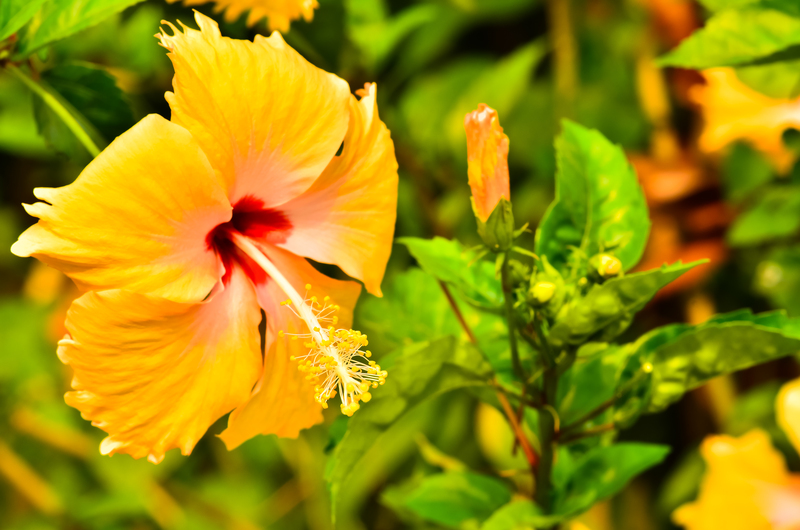Cultivating Orchids: What You Need to Know
Posted on 22/05/2025
Cultivating Orchids: What You Need to Know
Orchids are among the most captivating and diverse families of flowering plants, enchanting gardeners around the world with their stunning blooms and exotic charm. Whether you are a beginner or an experienced gardener, cultivating orchids can be an immensely rewarding hobby. This comprehensive guide explores everything you need to know about orchid cultivation: from understanding their unique nature to mastering their care, propagation, and troubleshooting common issues. Read on to unlock the secrets to thriving homegrown orchids!
Understanding Orchid Diversity
With over 25,000 species and more than 100,000 hybrids, orchids represent one of the largest and most varied plant families. Orchid varieties span every continent except Antarctica, adapting to a staggering range of environments from steamy rainforests to arid mountains. When starting your orchid journey, it's crucial to understand the types and their basic requirements.
Popular Types of Orchids
- Phalaenopsis (Moth Orchid): These are the most commonly grown and ideal for beginners, boasting long-lasting flowers and easy care.
- Cattleya: Known as the "queen of orchids," they produce large, fragrant, and spectacular blooms.
- Dendrobium: A versatile group with a wide range of flower shapes and growth habits.
- Oncidium: Often called "dancing lady orchids" for their frilly blooms.
- Vanda: Famous for their vibrant colors and striking, architectural growth.
Each orchid species or hybrid will have specific cultivation needs. Always research the individual requirements of any orchid you plan to grow.

Essential Conditions for Growing Orchids
While every orchid is unique, there are common elements to successful orchid care:
1. Light
Orchids generally thrive in bright, indirect sunlight. Too much direct sun will scorch leaves, while too little can prevent blooms.
- Phalaenopsis and Paphiopedilum: Prefer low to medium light (east or north windows indoors).
- Cattleya and Vanda: Thrive in medium to high light (south or west windows, supplemented with grow lights).
2. Temperature and Humidity
Most orchids are sensitive to temperature extremes. They flourish in temperatures humans find comfortable, usually between 60?F to 80?F (15?C to 27?C) during the day, with a slight drop at night for many types. Humidity should be kept between 40%-70%, depending on species.
- Use humidity trays or room humidifiers if your air is dry.
- Misting orchids daily can help, but avoid wetting the flowers and crowns.
3. Watering
Overwatering is the most common cause of orchid failure. These plants prefer to dry out slightly between waterings. The frequency depends on the species, the container, the growing medium, and the season.
- Stick your finger or a wooden stick into the medium; only water when it's mostly dry.
- Use room temperature, distilled, or rainwater if possible. Avoid softened water.
- Water in the morning so leaves dry by night, reducing risk of disease.
4. Potting Media and Containers
Unlike most houseplants, orchids do not grow in regular soil. Their roots need plenty of air. Choose specialized orchid potting mixes - common ingredients include:
- Bark chips
- Sphagnum moss
- Perlite
- Coconut husk chips
- Charcoal
Repot every 1-2 years, or when the medium starts to break down. Use orchid pots with holes to improve drainage and airflow.
5. Fertilizing Orchids
Orchids are light feeders. Use a balanced, water-soluble orchid fertilizer (such as 20-20-20 or specially formulated orchid food) diluted to half strength. Feed "weakly, weekly" during the growing season and less in winter.
Avoid fertilizing dry roots - always water first, then fertilize.
Basic Steps to Cultivating Orchids
Setting Up Your Orchid Plant
- Choose a healthy, disease-free plant from a reputable nursery.
- Repot in a well-draining orchid mix if purchased in a poor medium.
- Place in a location with appropriate light and airflow.
General Care Routine
- Inspect plants daily for pests, diseases, or dryness.
- Water only when necessary, following guidance above.
- Feed orchids regularly during active growth.
- Cut dead or dying flower stems after blooming (except for Phalaenopsis, where you can sometimes get a rebloom from the old spike).
- Repot when roots outgrow the pot or the medium deteriorates.
Common Challenges and Solutions in Orchid Growing
No matter how careful you are, orchids can encounter problems. Here are the most common issues and their remedies:
Pests
- Aphids: Small green or black bugs on flower buds, leave sticky residue. Remove by hand or treat with insecticidal soap.
- Mealybugs and scale: White, cottony or brown, hard bumps on stems and leaves. Swab with alcohol and isolate affected plants.
- Spider mites: Fine webs, leaf yellowing. Increase humidity and wash leaves regularly.
Disease
- Root rot: Caused by overwatering or poor drainage. Remove affected roots, repot in fresh medium, reduce watering.
- Leaf spots: Fungal or bacterial, often from splashing water. Remove affected leaves, improve airflow, treat with appropriate fungicide.
Culture Problems
- Failure to bloom: Usually due to insufficient light or improper temperature drop at night. Ensure correct conditions for your species.
- Wrinkled leaves: Can indicate underwatering, root loss, or stress. Check roots and adjust watering routine.
Repotting Orchids: A Step-by-Step Guide
To keep your orchids thriving, regular repotting is essential. Here's how to do it:
- Remove the orchid gently from its pot. Loosen and rinse old medium from the roots.
- Trim dead or mushy roots with sterilized scissors.
- Place in a new, appropriately sized pot with fresh orchid mix. Spread roots naturally before covering with medium.
- Water lightly and avoid fertilizer for two weeks, allowing new roots to establish.
Propagating Orchids: Expand Your Collection
Orchid propagation allows you to multiply your favorite plants. The methods vary by type:
- Division: Suited for sympodial orchids (like Cattleya, Oncidium, Dendrobium). Divide mature plants when repotting, ensuring at least 3-4 pseudobulbs per division.
- Keiki ("Baby" Orchid) Separation: Some monopodial types (Phalaenopsis, Dendrobium) produce baby plants along flower spikes. Detach when roots are 2-3 inches long and pot separately.
- Seed propagation: Advanced technique, requiring sterile lab conditions due to the tiny, dust-like seeds and their need for fungal symbiosis.
Patience is necessary for propagation, as orchids grow slowly.
Indoor vs Outdoor Orchid Growing
Most orchid enthusiasts begin indoors, but many varieties can also thrive outdoors in suitable climates.
- Indoor orchids: Controlled temperature and humidity. Avoid direct sun behind glass; rotate plants for even growth.
- Outdoor orchids: Can be grown on trees (epiphytic) or in sheltered patios. Protect from wind and harsh weather; check for pests more frequently.
Always transition your orchids gradually to different environments to prevent shock.
Tips for Blooming Success
- Research the specific needs of each orchid species.
- Ensure proper light and temperature drops at night (especially important for Cattleya, Oncidium, and Dendrobium).
- Avoid overpotting; orchids bloom better when slightly root-bound.
- Feed with bloom-boosting fertilizer prior to expected blooming season.
- Be patient: Some orchids, especially from newly purchased or divided plants, may take a year or more to rebloom.
Sustainable and Ethical Orchid Cultivation
With the popularity of orchid growing, wild populations are sometimes threatened by illegal collection. Always source your orchids from reputable nurseries, not wild-collection. Consider supporting conservation organizations or participating in local botanical garden programs.
Many growers enjoy hybridizing and sharing divisions with fellow enthusiasts, helping to safeguard both species and knowledge.

Frequently Asked Questions About Orchid Care
- How often do orchids bloom? - Most orchids flower once a year, but some (like Phalaenopsis) can bloom multiple times a year under ideal conditions.
- How long do orchid flowers last? - Blooms can last from 3 weeks up to 3 months, depending on species and care.
- Can I grow orchids under artificial light? - Yes, many thrive under LED grow lights. Ensure the correct light intensity and photoperiod.
- Why are orchid leaves turning yellow? - Common causes include too much light, overwatering, or natural leaf aging.
- What is the best pot for orchids? - Slotted or mesh orchid pots that provide excellent drainage and aeration.
Conclusion: Your Journey with Orchids Begins
Whether you have a single windowsill specimen or a sprawling greenhouse collection, the key to cultivating beautiful orchids is observation, patience, and a willingness to adapt. With the tips in this guide, you'll be well-equipped to keep your orchids healthy, vibrant, and blooming year after year.
Happy growing, and may your orchids flourish!
Further Resources for Aspiring Growers
- American Orchid Society: www.aos.org
- Your local botanical gardens
- Specialized orchid forums and grower groups
- Quality orchid books and magazines
With dedication and these cultivation secrets, the world of orchids is yours to explore.



